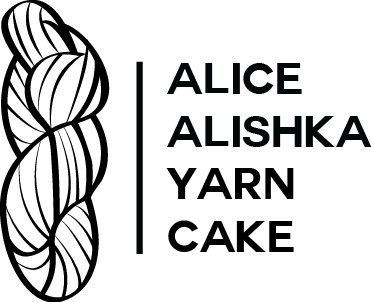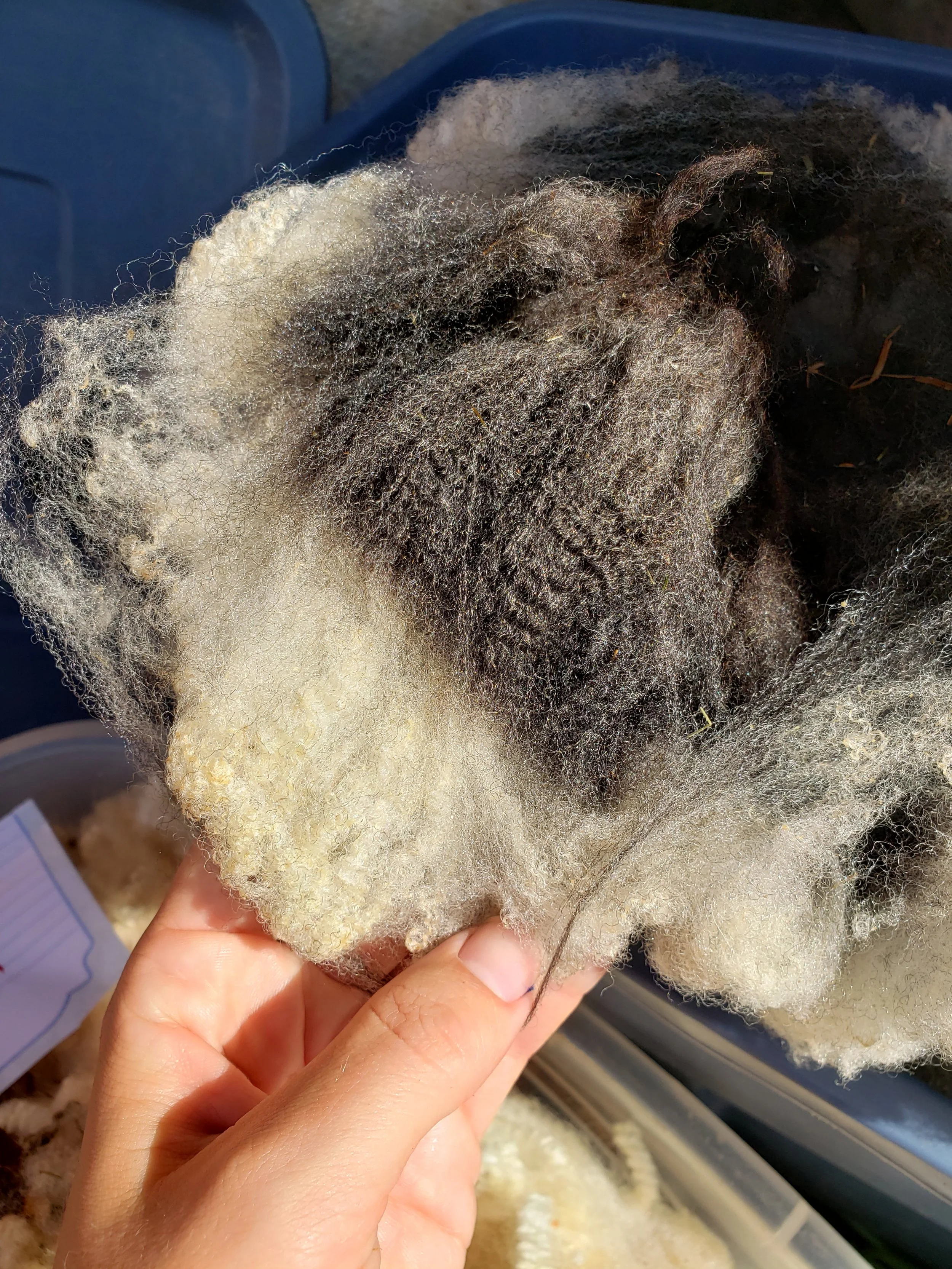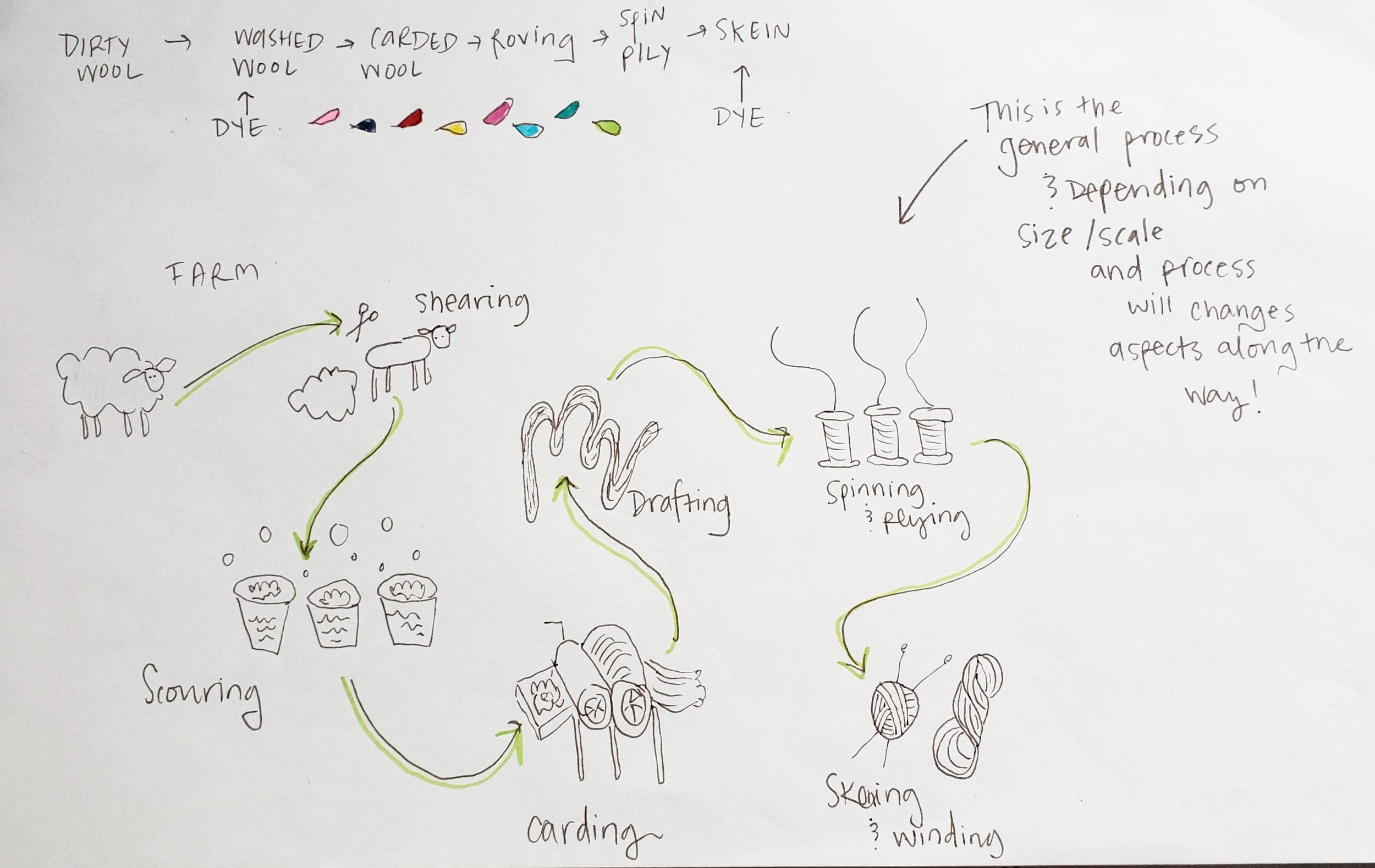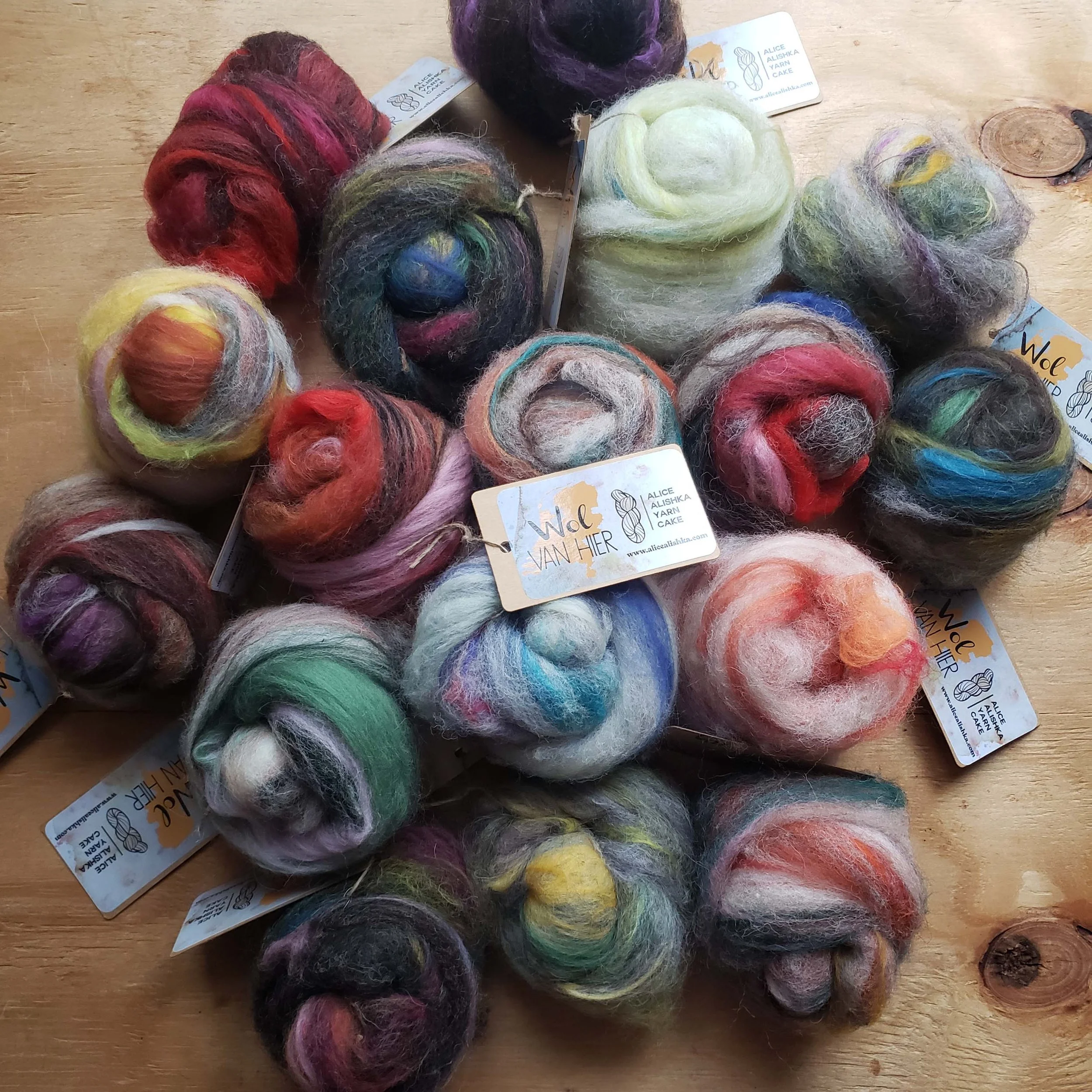The general Process of Making Yarn
Shearing: The sheep gets a haircut! If you want to further process wool, this is done by a trained professional.
Skirting: Someone hand-picks out any unusable material, debris or matted fibres.
Tumbling (optional): This helpful extra step removes dust and dirt.
Scouring (Washing): Wool is naturally coated in lanolin, a waxy fat, which makes washing tricky. If done right, this step improves quality—if done wrong, it can ruin the wool.
Drying & Picking: Once clean, the wool is dried and fluffed up.
Carding: The wool is brushed into batts or roving/sliver, aligning the fibres.
Drafting & Spinning: The fibres are spun into a single ply, which can then be plied together for added strength.
Setting & Finishing – The yarn is steamed or washed to set the twist and remove any existing machine grease.
Skeining & Packaging – Finally, the yarn is wound into skeins, balls, or cones, ready for use.
The Reality of Wool Production
In many parts of the world, sheep farmers see wool, a natural byproduct of raising sheep, as a burden. The cost and effort to care for the sheep and process their wool often outweigh the return. Yet, at the same time, the global crafting industry is thriving.
So, where does your yarn come from? How is it processed? How far has it traveled? And most importantly—who is actually making money from it?
Sheep naturally grow wool, and it needs to be shorn (cut) regularly, whether the sheep are raised for meat, milk, fibre, grazing, or simply as pets. Depending on the breed, they need shearing every 6 to 18 months. What happens to the wool after that varies widely Some farmers pile it up and leave it, some throw it into the woods, some truck it to landfills, some burn it, some compost it, and a small number actually process it.
our products
-
Wool Raised and Processed within the Netherlands comes from Farms and Shepards in the Northeast region.
Alpaca comes from small farms south of Eindhoven, North of Weert.
I buy wool directly from farms both dirty and scoured. When needed I scour the wool in my home based studio.
All the Batts are carded by hand at my home based Studio.
-
Wool Raised and Processed within the Netherlands from Farms and Shepards in the Northeast region.
Alpaca comes from small farms south of Eindhoven, North of Weert.
I buy wool directly from farms both dirty and scoured. When needed I scour the wool in my home based studio.
All the Batts are carded by hand at my home based Studio.
In our blended batts the exact path of the additives is less known, we are working to replace these with traceable products!
Currently:
Merino - raised, processed, and pre dyed in Australia.
Bamboo and Silk - grown, processed, and dyed in China.
-
The sheep live in the Heaths of Noord Brabant and Limburg, the south western part of the Netherlands. They are used for ecological grazing practices in nature reserves.
The wool is shorn and shipped to Belgium to be scoured. The sent to Eastern Germany to be carded and spun onto cones. The cones are returned to Noord Brabant, where I wind them into skeins and dye them from my home studio.
-
The Dutch Merino is raised and shorn on a farm in Zeeland, the southwest of Holland.
The dirty wool is sent to Italy and fully processed there. The Roving/Lont returns to the Netherlands where I dye it from my home Studio.
It comes in two natural colours colours, white and grey/brown.
-
Like our Roving/Lont, Dutch Merino is raised and shorn on a farm in Zeeland, the southwest of Holland.
The dirty wool is sent to Italy and fully processed there. The yarn returns to the Netherlands on cones where I wind it and dye it from my home Studio.
Hello!
I’m Alice Banks, a textile-based artist, researcher, and maker. My love for textiles started young—there’s something fascinating about how they can be both beautiful and functional. Growing up, I watched my mother and grandmother knit and crochet, and that early exposure sparked my deep interest in materials.
Over the past decade, I’ve shifted my focus toward sustainability in art, craft, and design. In 2018, I started working in the wool industry, and since then, I’ve explored so much of the knitting and yarn world. It was during these years that I began questioning the process—where materials come from, how they’re made, and what role I play in it all.
Today, I feel incredibly lucky to design and create sustainable, innovative wool-based yarns under my brand, Alice Alishka Yarn Cake. In 2025, I launched a sub-brand called Wol Van Hier, which translates to “wool from here” in Dutch. My goal is transparency—I want crafters to understand the entire process and be able to choose products that align with their values and consumer responsibility.




